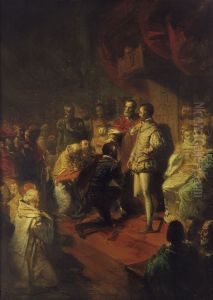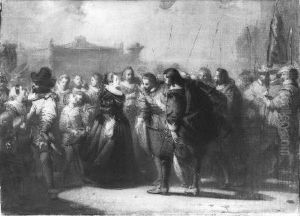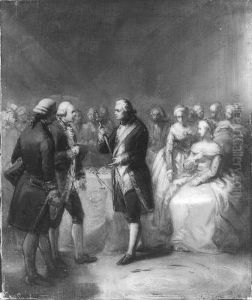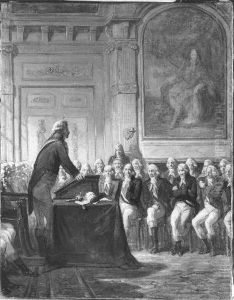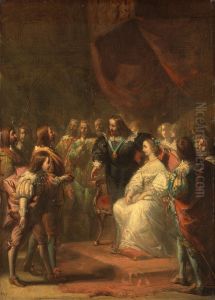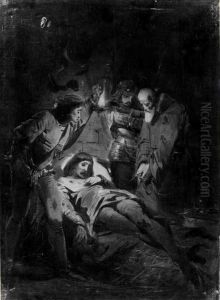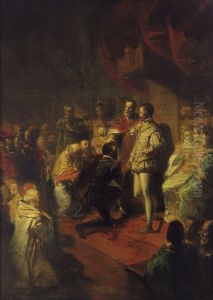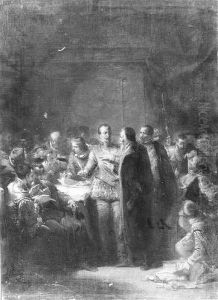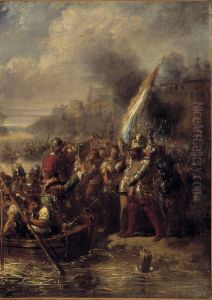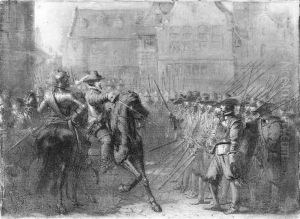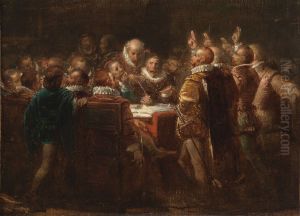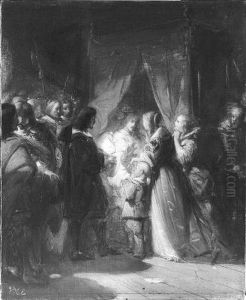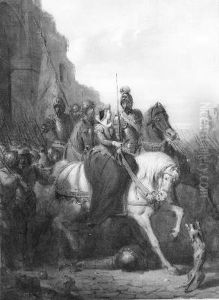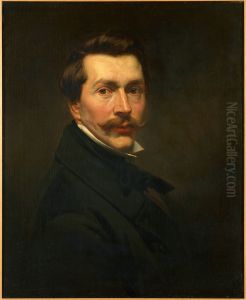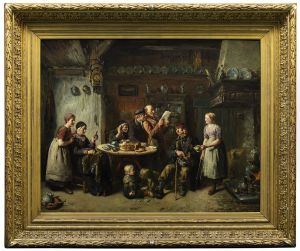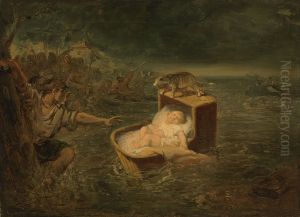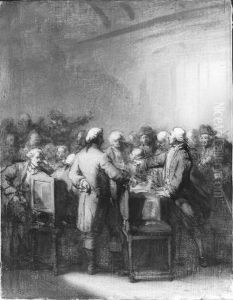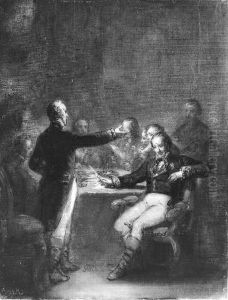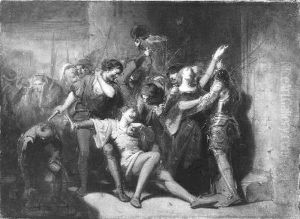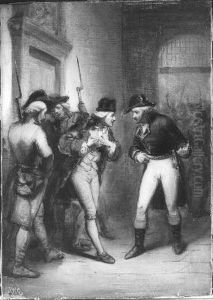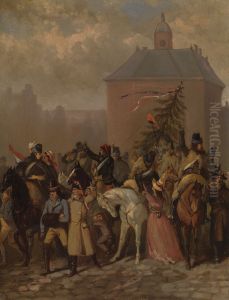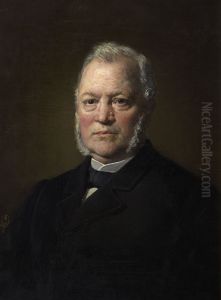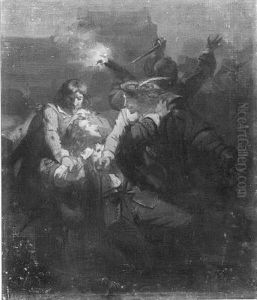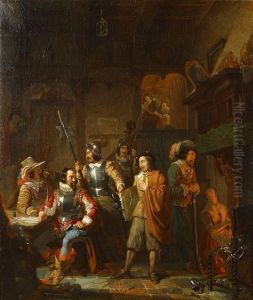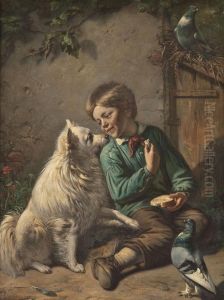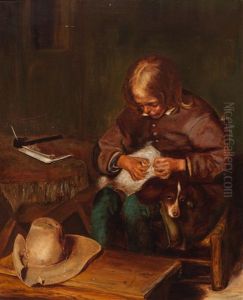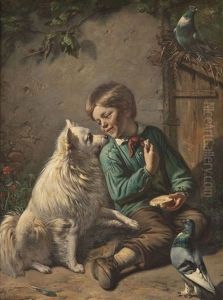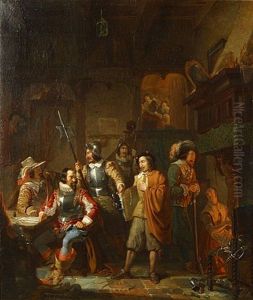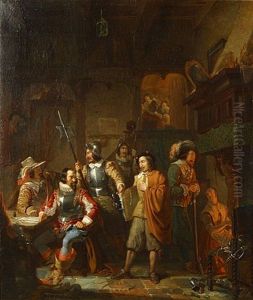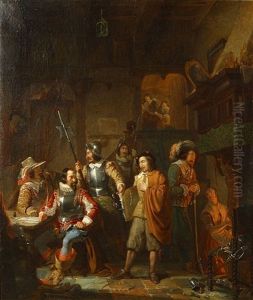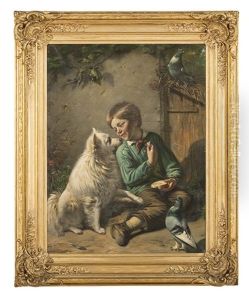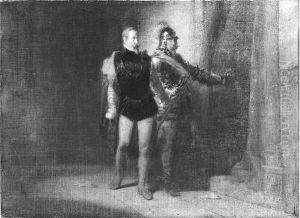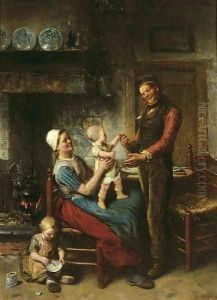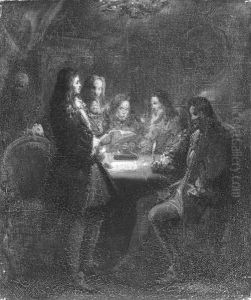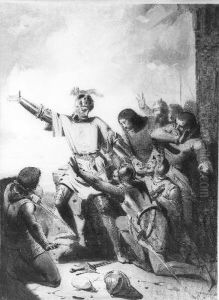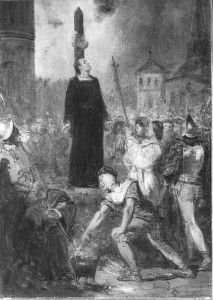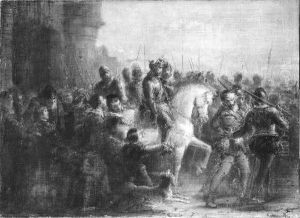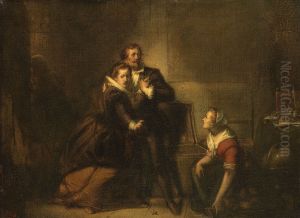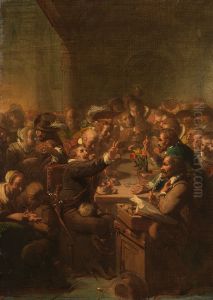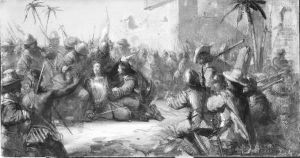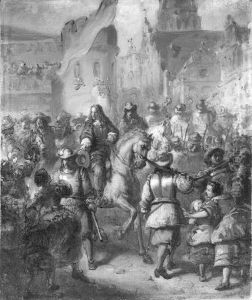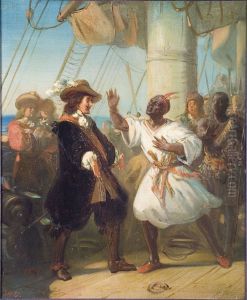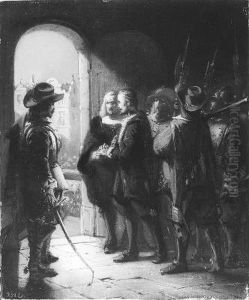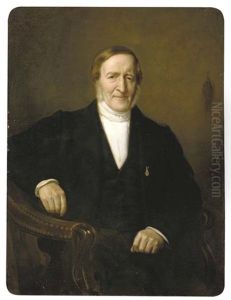Johannes Hinderikus Egenberger Paintings
Johannes Hinderikus Egenberger was a Dutch painter and art teacher, born on April 8, 1822, in Utrecht, the Netherlands. He is often remembered for his historical paintings and his work as a professor at the Academy of Fine Arts in Utrecht.
Egenberger started his artistic education at the Utrecht city drawing school, where he was taught by the historical painter Jan Baptist Tetar van Elven. He continued his studies at the Royal Academy of Art in Amsterdam, where he was influenced by the Romantic movement, which was prevalent in Europe during the early 19th century. This movement emphasized emotion and individualism, as well as a reverence for the past, which often manifested in artworks as an interest in history and nature.
After completing his studies, Egenberger returned to Utrecht, where he worked as a painter. His oeuvre consisted mainly of historical scenes, often inspired by Dutch history, and he gained recognition for his meticulous attention to historical detail and his ability to evoke a narrative through his compositions. His painting style was characterized by fine brushwork and a vivid portrayal of his subjects.
Aside from his painting career, Egenberger was also a respected teacher and was appointed as the director of the Utrecht Academy, now known as the Utrecht School of the Arts. His tenure as a professor lasted from 1862 until his retirement in 1886. During this time, he educated and influenced a generation of artists, including some who would go on to become prominent figures in Dutch art.
Egenberger's influence extended beyond his artwork and teaching. He played a significant role in the cultural life of Utrecht and was involved in various art societies. His contributions to the Dutch art scene were recognized by his contemporaries, and his works were collected by various institutions and private collectors.
Johannes Hinderikus Egenberger died on October 5, 1897, in Utrecht. Although not as widely known today, his legacy lives on through his contributions to Dutch historical painting and his impact as an educator. His works can still be found in museum collections and serve as a testament to his skill and dedication to the arts.
